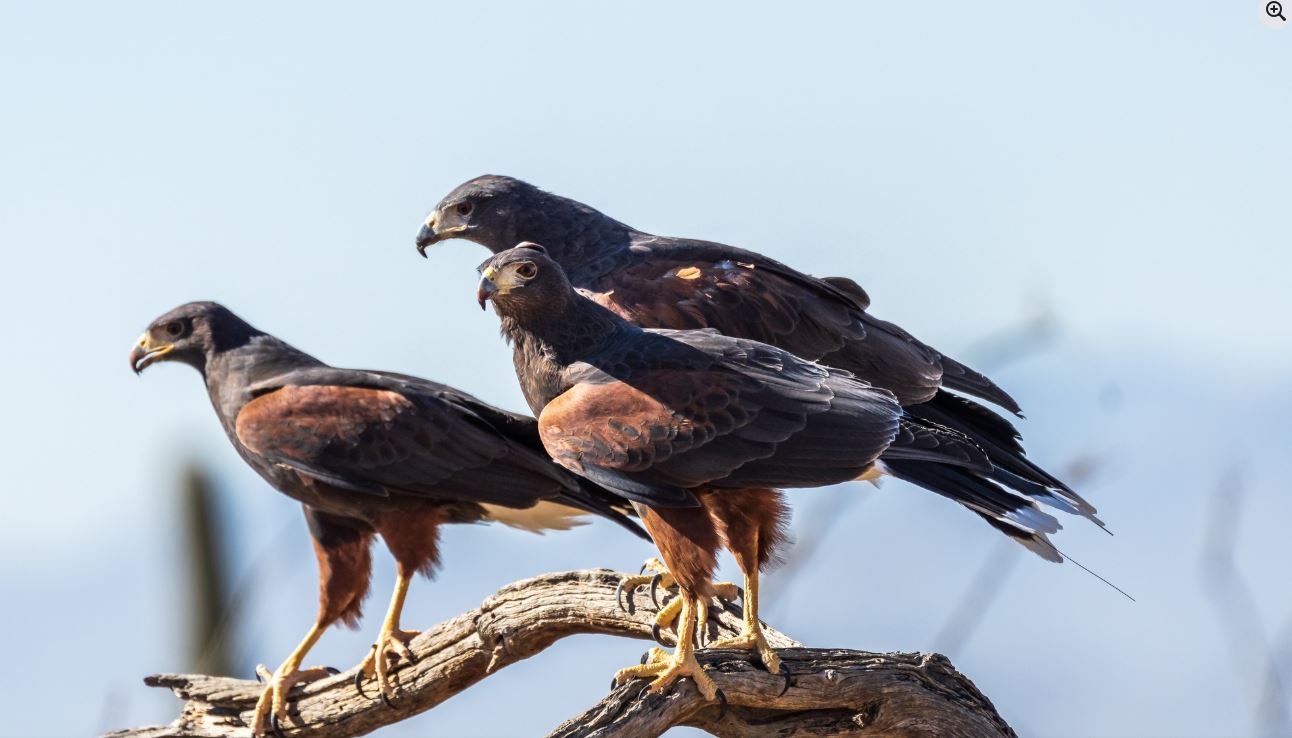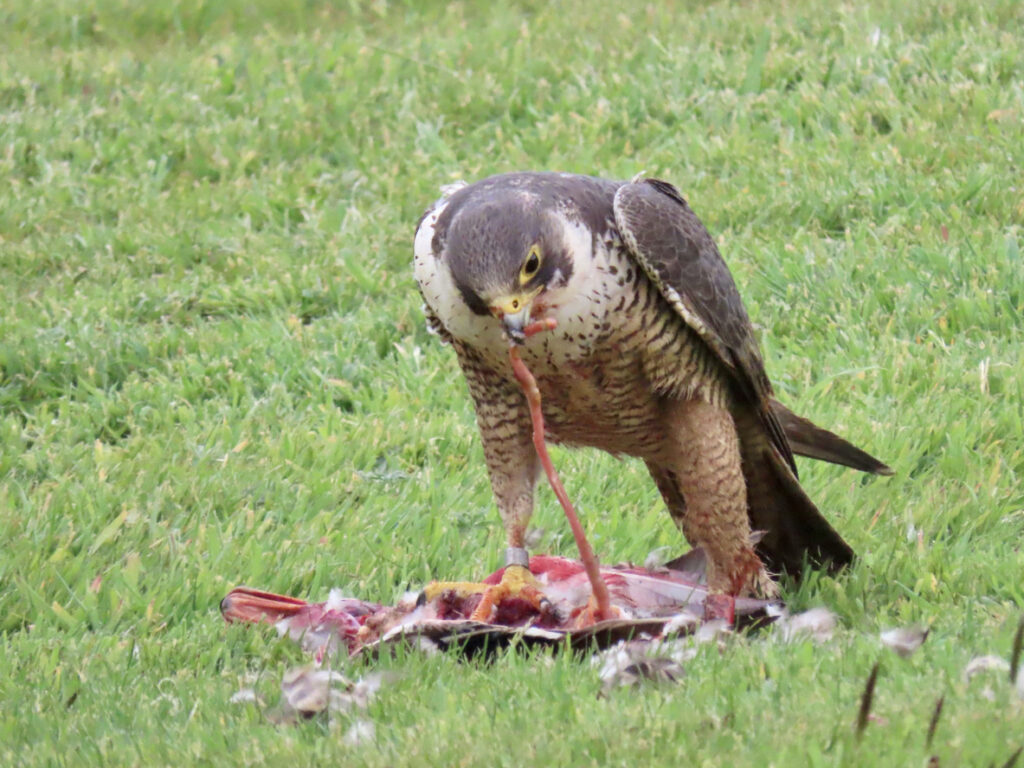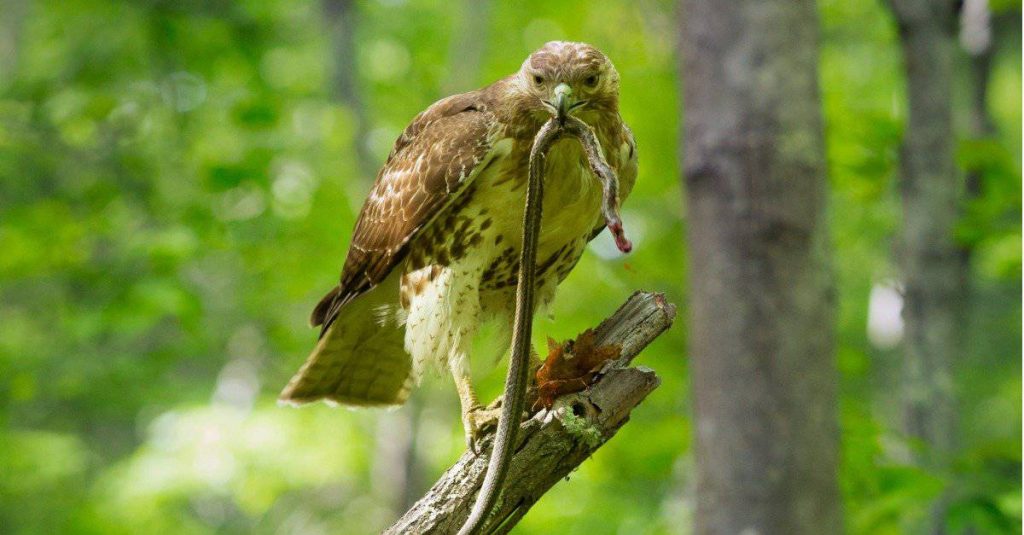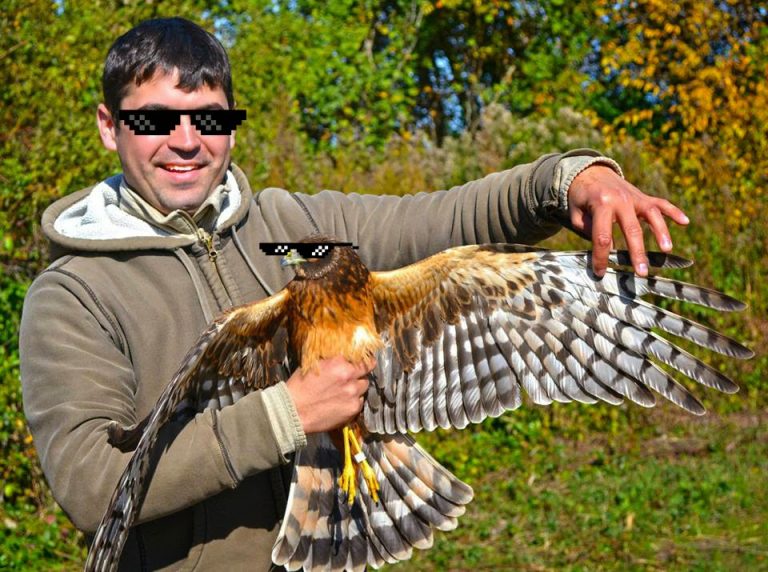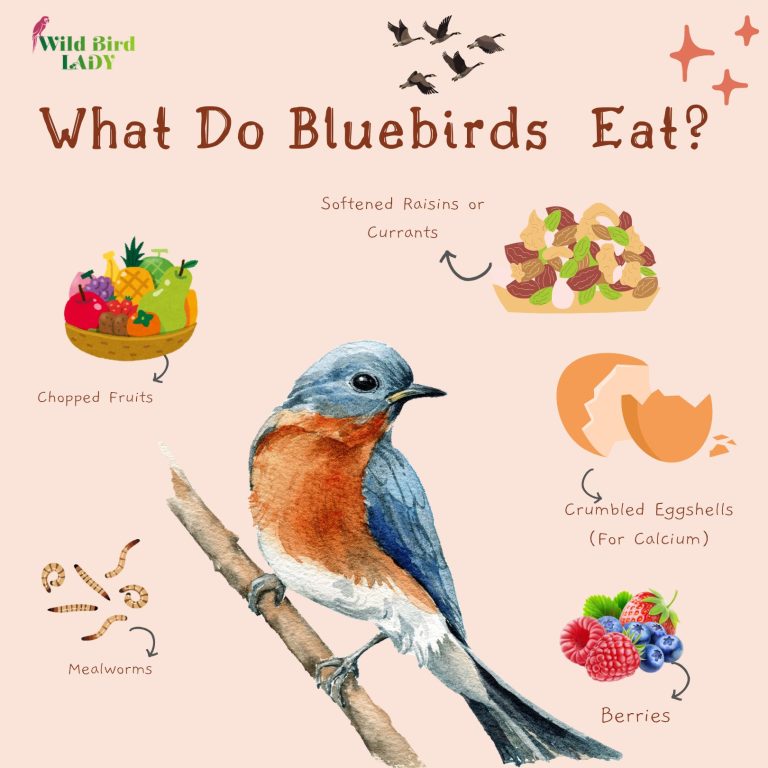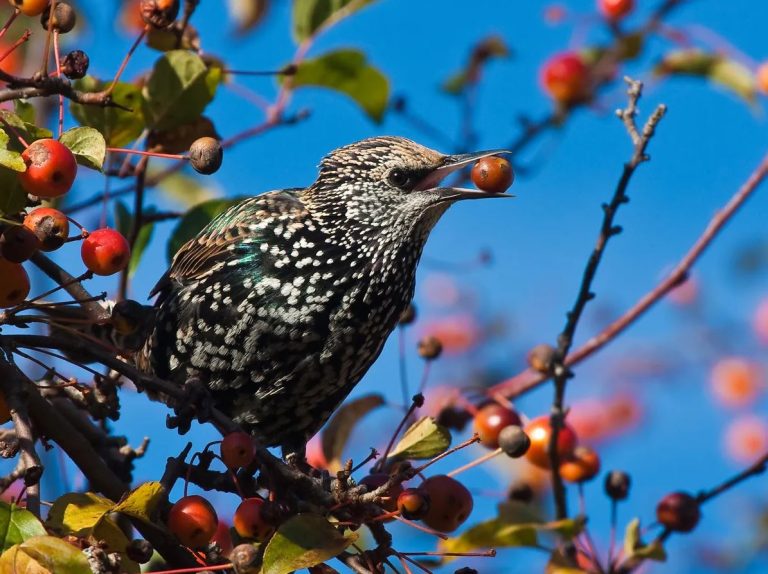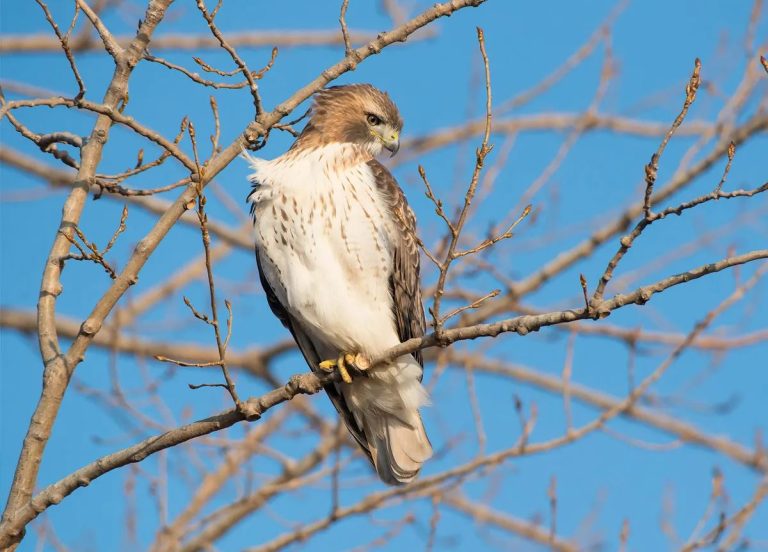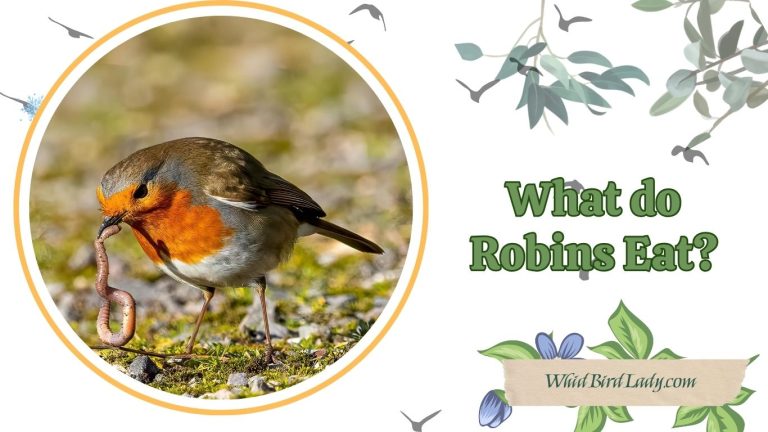What Do Hawks Eat in the Wild? Everything You Need to Know
When you see a hawk soaring high above the treetops or perched silently on a fence post, you might wonder: What do hawks eat? The answer is more shocking—and fascinating—than you might expect.
These birds of prey are expert hunters, equipped with keen eyesight, razor-sharp talons, and an instinct for survival. From small rodents to unsuspecting birds, hawks have a diverse diet that plays a vital role in keeping ecosystems balanced.
In this comprehensive guide, we’ll uncover:
- What hawks eat in the wild
- The most common (and unexpected) prey they target
- How diet varies between hawk species
- Seasonal differences in what hawks eat
- What baby hawks are fed
- Whether hawks eat pets like chickens or cats
- And more!
Let’s take a closer look at what’s on the menu for these fascinating raptors.
What Do Hawks Eat in the Wild?
At their core, hawks are carnivorous predators. They rely entirely on meat and are highly opportunistic, meaning they’ll eat whatever prey is most accessible and easiest to catch.
Most common prey includes:
- Small mammals (mice, voles, rabbits, squirrels)
- Birds (songbirds, doves, pigeons)
- Reptiles (snakes, lizards)
- Amphibians (frogs, toads)
- Large insects (grasshoppers, beetles)
- Fish (rare, but some species will catch them)
Why Do Hawks Eat So Many Types of Animals?
Hawks are generalists—they don’t specialize in one food source. This gives them an advantage in diverse habitats. If mice are scarce, they might hunt birds. If birds are hiding, they might go for snakes or frogs. This flexible approach helps hawks survive in everything from forests and deserts to city parks.
A Closer Look: Most Common Hawk Meals
1. Mice and Small Rodents
Mice are a hawk’s version of fast food—abundant, easy to catch, and packed with protein.
Popular rodent prey includes:
- House mice
- Field mice
- Voles
- Shrews
- Young rabbits
Red-tailed hawks, one of the most widespread hawks in North America, often perch along highways scanning grassy shoulders for movement. Once spotted, they swoop down and snatch up their prey in seconds.
2. Birds
Yes—hawks eat other birds! This surprises many birdwatchers and backyard feeder owners.
Hawks that specialize in hunting birds include:
- Cooper’s Hawk
- Sharp-shinned Hawk
These agile raptors fly swiftly through dense woods and urban neighborhoods, ambushing:
- Sparrows
- Doves
- Finches
- Starlings
- Sometimes even pigeons or young chickens
Backyard bird feeders can unintentionally attract hawks, as feeders gather small birds in one place—a perfect hunting ground for hungry raptors.
3. Snakes and Lizards
In warmer regions, hawks frequently hunt reptiles like:
- Garter snakes
- Rat snakes
- Small lizards
- Skinks
Red-shouldered hawks, often found in the southeastern U.S., are especially fond of reptiles and amphibians.
4. Frogs and Amphibians
Though not a hawk’s first choice, frogs and toads become important food sources during spring and rainy seasons.
Hawks near wetlands or ponds may consume:
- Bullfrogs
- Tree frogs
- Toads
The squishy texture may not appeal to us, but for a hungry hawk, it’s just another high-protein snack.
5. Insects
Larger insects make up part of the diet of smaller hawks and younger birds.
Typical insect prey:
- Grasshoppers
- Crickets
- Beetles
- Dragonflies
Broad-winged hawks, especially during migration, feed on swarms of insects to build energy for long-distance flights.
Species-Specific Hawk Diets
Not all hawks eat the same thing. Let’s explore how diet varies between common hawk species in North America.
Red-Tailed Hawk
- Diet: Rodents, rabbits, snakes, birds
- Habitat: Forest edges, open fields, highways
- Hunting Style: Soaring or perch-and-pounce
Cooper’s Hawk
- Diet: Medium-sized birds (doves, pigeons), occasional rodents
- Habitat: Suburban backyards, woods
- Hunting Style: Quick aerial chases through trees
Sharp-Shinned Hawk
- Diet: Small birds (sparrows, warblers)
- Habitat: Forests, suburbs
- Hunting Style: Surprise attacks at feeders
Swainson’s Hawk
- Diet: Insects (during migration), small mammals
- Habitat: Grasslands, agricultural areas
- Hunting Style: Soaring and ground foraging
Harris’s Hawk
- Diet: Rabbits, lizards, birds
- Habitat: Deserts and scrublands
- Hunting Style: Cooperative pack hunting (unique among hawks!)
Seasonal Shifts in Hawk Diets
Just like other wildlife, hawks adapt their hunting habits and food choices to match what’s available throughout the year. Seasonal changes in temperature, daylight, and prey populations all play a role in shaping what hawks eat. Understanding these shifts helps explain not only hawk behavior but also when and why you might spot them near your yard, farm, or feeders.
Spring: A Time of Abundance and Opportunity
As temperatures rise and nature awakens from winter dormancy, spring offers hawks a buffet of fresh options. This is a crucial season for hawks—especially breeding pairs—who need high-energy food sources to raise their young.
Typical spring prey includes:
- Frogs and toads emerging from hibernation near ponds and wetlands
- Nestling birds, which are easy targets due to their immobility
- Newborn rodents like baby rabbits or field mice
- Insects such as beetles, dragonflies, and large grasshoppers
Because so many species are reproducing in spring, hawks take advantage of vulnerable young animals. It’s also common to see hawks nesting nearby, feeding their eyasses multiple times a day with whatever they can catch.
Summer: Peak Hunting Season
Summer is the height of hunting season for hawks. With long daylight hours and plenty of prey scurrying through fields and forests, hawks stay active from dawn to dusk.
Common summer meals include:
- Small mammals such as voles, chipmunks, rabbits, and squirrels
- Reptiles, especially snakes and lizards basking in the sun
- Juvenile birds learning to fly or explore outside the nest
- Insects, especially in agricultural fields and grasslands
Because prey is plentiful and more exposed in open terrain during summer, hawks like the Red-tailed Hawk and Swainson’s Hawk thrive during this time. It’s also a period of learning for fledgling hawks who begin practicing their hunting skills under the watchful eye of their parents.
Fall: Preparing for the Lean Months
As autumn arrives, many animals prepare for winter—either by storing food, bulking up, or migrating. Hawks also shift their focus during this season, especially those preparing for long migrations south.
Main fall food sources:
- Fat rodents like field mice, ground squirrels, and gophers storing food
- Large insects, especially crickets, grasshoppers, and beetles
- Young birds from late-season nests
- Occasional amphibians, particularly in wet areas
Fall is a high-energy-demand season for migratory hawks like the Broad-winged Hawk. These birds may consume large quantities of insects during migration to fuel their journeys, sometimes traveling thousands of miles to Central or South America.
Winter: Survival Mode
Winter is the most challenging season for hawks, especially in colder northern climates. With many prey species in hibernation or less active, hawks must work harder and be more resourceful to find food.
Winter diet often includes:
- Small mammals like mice, rats, or voles that stay active under snow
- Resident songbirds, such as sparrows, doves, or juncos at bird feeders
- Carrion, including roadkill or leftover kills from other predators
In urban or suburban areas, hawks like the Cooper’s Hawk and Sharp-shinned Hawk are known to frequent backyards with feeders, preying on flocks of small birds. Their appearance may seem startling, but they’re simply adapting to the resources available in harsh conditions.
According to the Cornell Lab of Ornithology, Cooper’s Hawks have adapted remarkably well to suburban environments, often preying on birds attracted to backyard feeders. “These hawks are now common in cities, stalking prey from trees and hedges, and making surprise attacks on unsuspecting birds at feeders.”
— All About Birds
Migration Period: Fueling Up on the Fly
Migration isn’t tied to one specific season—it typically happens in spring and fall—but it places unique demands on hawks. During migration, hawks may:
- Rely more on insects and amphibians, which are easier to catch mid-journey
- Hunt opportunistically in unfamiliar landscapes
- Choose smaller, energy-efficient prey to conserve strength
Migratory hawks must balance the need for high-calorie meals with the physical toll of long flights. Some, like the Swainson’s Hawk, switch almost entirely to insect diets—such as grasshoppers and dragonflies—during their trip through Central America.
In short: A hawk’s diet is as dynamic as the seasons themselves. These birds adjust not only what they eat but how they hunt—ensuring their survival no matter the conditions.
Do Hawks Eat Carrion?
Hawks can eat carrion (dead animals), but they typically prefer live prey. Carrion is more associated with vultures, but in times of scarcity, especially during winter, some hawks will scavenge roadkill or other remains.
What Do Baby Hawks Eat?
Baby hawks, known as eyasses, rely entirely on their parents to bring food to the nest.
A typical feeding schedule:
- 0–7 days old: Parents tear prey into small bits (mice, insects)
- 7–14 days: Chicks eat small rodents or birds whole (with help)
- 3+ weeks: Parents bring full prey items like squirrels or pigeons
By the time they fledge (around 6 weeks), young hawks are already learning to hunt, often practicing on insects or small lizards.
Do Hawks Eat Pets?
It’s a common fear for pet owners—but how realistic is it?
Hawks can eat:
- Small chickens (especially chicks)
- Pigeons or doves raised as pets
- Occasionally very small dogs or kittens under 5 pounds (rare)
However, attacks on pets are extremely rare. Hawks typically avoid humans and prefer wild prey. To protect backyard chickens, consider using:
- Covered chicken runs
- Reflective deterrents
- Scare devices like owl statues or CDs
Urban Hawks: What Do They Eat?
Urban and suburban hawks adapt quickly to new environments. In cities, they may hunt:
- Rats and pigeons
- Squirrels
- Mourning doves
- Occasionally songbirds at feeders
Cooper’s hawks and red-tailed hawks are especially common in North American cities, where bird feeders, open lawns, and park trees offer ideal hunting zones.
Fascinating Hawk Feeding Facts
- They can spot a mouse from over 100 feet away! Hawks have some of the sharpest eyesight in the animal kingdom.
- They use their talons, not their beaks, to kill. The crushing power of their feet can pierce through skin and bone.
- Hawks can carry prey nearly equal to their own weight. But they prefer lighter loads for efficient flying.
- They often eat on the ground or a perch, not in the air. After capturing their prey, hawks will land to feed in peace.
Final Thoughts: What Do Hawks Eat?
From tiny insects to other birds, hawks have one of the most varied and fascinating diets in the bird world. They’re not just hunters—they’re vital players in maintaining natural balance by controlling rodent populations and keeping ecosystems healthy.
Whether you’re a bird lover, backyard feeder, or curious nature observer, knowing what hawks eat deepens your appreciation for these aerial predators.
So next time you spot a hawk circling above or diving through your yard—remember, it’s likely on the hunt. And now, you know exactly what it’s looking for.
FAQs: Quick Answers About Hawk Diets
Q: Do hawks eat snakes?
Yes, especially species like red-tailed and red-shouldered hawks.
Q: Do hawks eat cats or dogs?
Only in extremely rare cases and only if the pet is very small (under 5 lbs).
Q: Do hawks eat other hawks?
Not typically. While hawks are territorial, cannibalism is rare and usually only occurs among young or in desperate conditions.
Q: What’s a hawk’s favorite food?
It depends on the species, but rodents are a top choice for most hawks.

